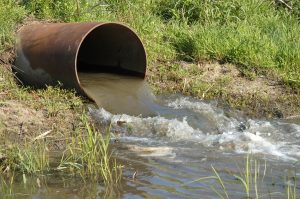Hydrogen production has become a popular alternative to fossil fuels, and our customers at the University of Glamorgan conducted research on how fermenting sewage sludge can result in the production of hydrogen.
Using sewage sludge as a base for fermentative hydrogen production offers several advantages over other biomass sources including it being low-cost, readily available wherever there are human settlements, and in most developed countries the infrastructure already exists which allows for sludge collection and centralised processing.
A number of researchers have succeeded in producing hydrogen, fermentatively, from simple substrates such as glucose and sucrose. However, applying these findings to the fermentation of actual waste streams such as sewage sludge involves several difficulties. The results from this research showed that hydrogen was successfully produced by fermenting primary sewage sludge after it had been treated with heat and digested with a commercially available enzyme preparation. When either heat treatment or enzymatic digestion were not used, no hydrogen was produced during fermentation.
Sensors for Hydrogen Production using Sewage Sludge
During the studies, carbon dioxide and methane in the biogas were measured using the Edinburgh Sensors Gascard NG infra-red gas sensor. The Gascard was used to measure the infra-red energy absorbed by the gas sample at a characteristic wavelength which correlates with the concentration of carbon dioxide or methane in the gas stream.
Read the full article on hydrogen production using sewage sludge.
Gascard NG
The Gascard NG infra-red gas sensor is designed for ease of integration with a wide range of gas detection systems that require high quality, accurate and reliable measurement of CO, CO2, CH4 gas concentrations.
It includes real-time temperature and atmospheric pressure correction via on-board sensors and has the flexibility to incorporate additional gas detection technologies. It has onboard true RRS232 communications along with the option of TCP/IP communications protocol.
If you would like to learn more about our Gascard NG, contact a member of our team at sales@edinst.com. We would be delighted to help you find the right solution that meets your needs, as well as offer bespoke solutions.
Stay in Touch
If you have enjoyed learning about how our NDIR sensors were used within the hydrogen production process and would like to learn more about Edinburgh Sensors and the capabilities of our products, then simply sign-up to our newsletter via the button below, or join us on social media and we’ll keep you up to date with our latest research and news.

